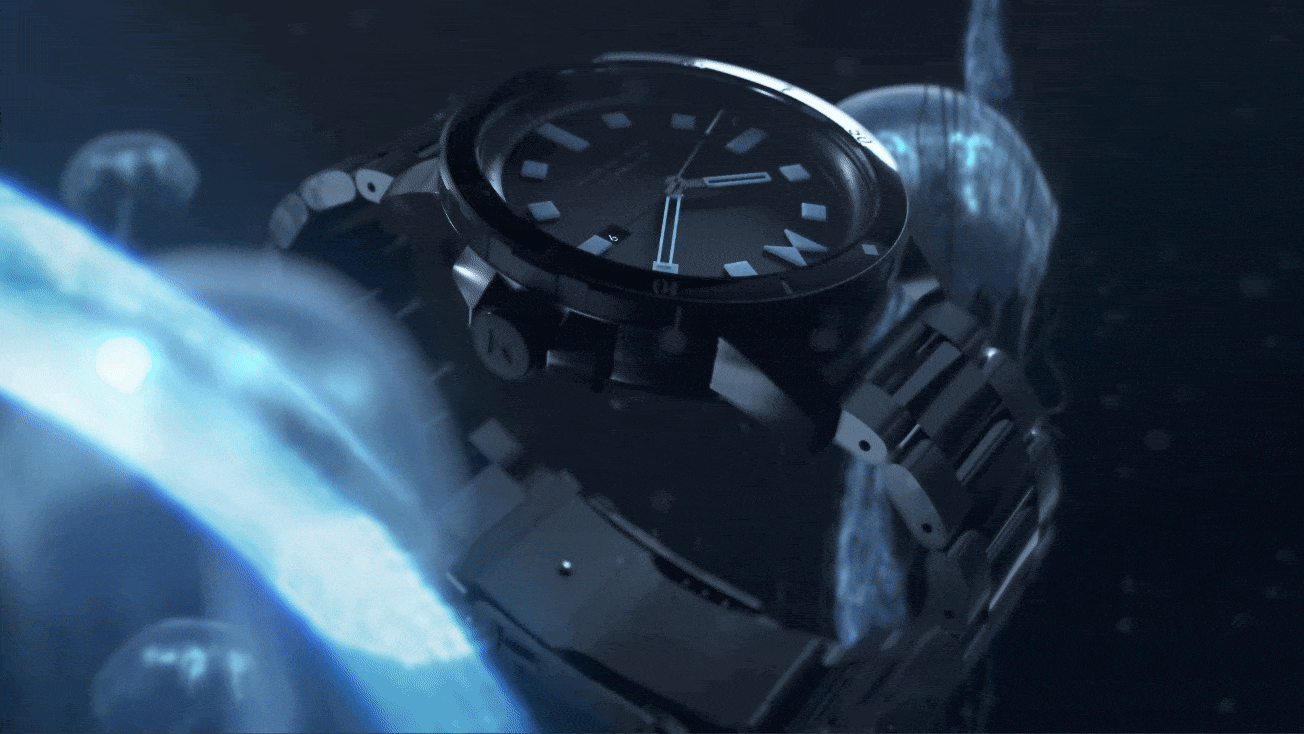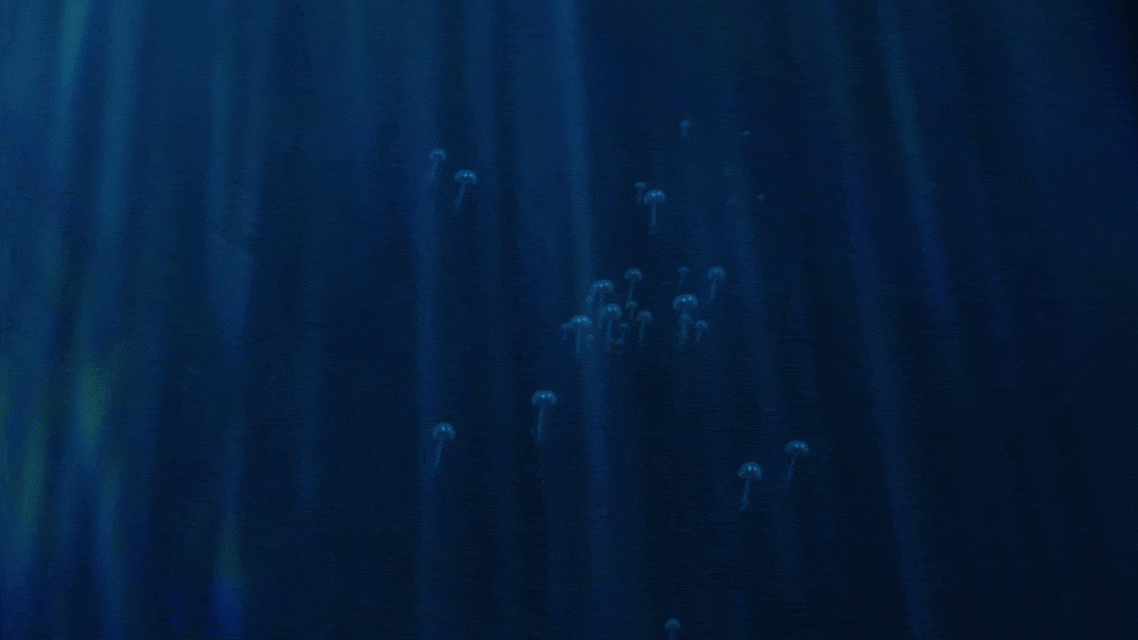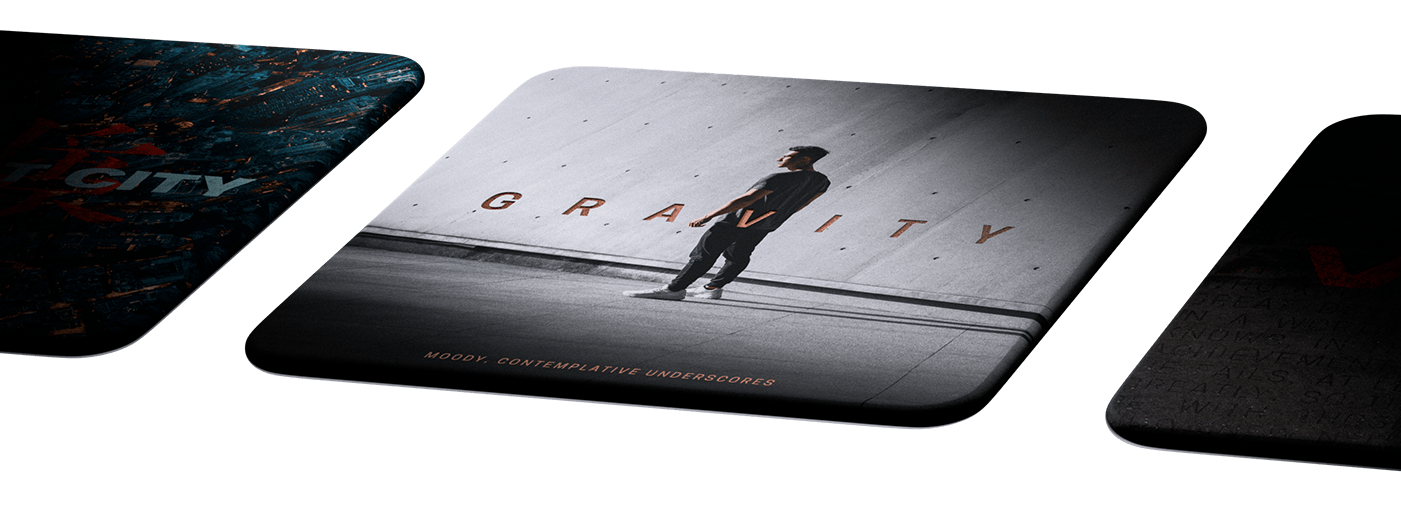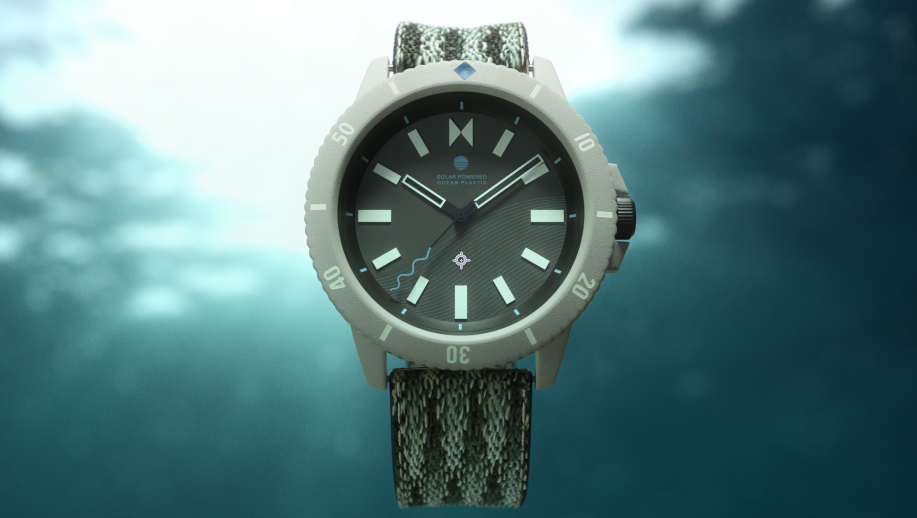Building immersive worlds for MVMT.
How Totale brings a watch brand to life.
From ocean plastic to clean, modern design, MVMT Watches leans on powerful visual storytelling to help them stand out in a world of noise. Enter Corey Milne of Totale.
Corey Milne is a VFX Producer at Totale and is based in Los Angeles, CA. His portfolio includes many high-end commercial spots for MVMT Watches that bring their products to life. Before we share our conversation with Corey on one specific project he completed for MVMT Watches, we wanted to give you a glimpse into how he’s incorporated Lens Distortions into his workflow.
From the music to the VFX library, LensDistortions.com is a staple, and sometimes even the starting point in Corey’s process. Take a look at Totale’s portfolio of MVMT commercials and read more from our conversation with Corey Milne about one project specifically.
“Project Dive” spotlights MVMT’s automatic watch with glowing features against a dark backdrop that utilizes a quiet character and VFX. Read more from our conversation with Corey Milne of Totale about this specific MVMT Watches commercial.

“We knew we wanted to draw parallels between this natural phenomenon and the glowing feature of the automatic watch.”
This project had such a unique visual concept, with the juxtaposition between the colorful, organic jellyfish and the monochromatic, physical dive watch. Where did the inspiration for this concept originate?
This past year, we had the most beautiful and vivid bioluminescence to date. We knew we wanted to draw parallels between this natural phenomenon and the glowing feature of the automatic watch. In addition, the embroidered Jellyfish emblem on the back of the watch was the perfect spirit animal. A glowing watch.. among glowing jellyfish.


Were there camera moves you had in mind?
To add more production value, we ensured every camera move was multinodal. We avoided static tilts and pans and focused more on dolly’s, trucks, and orbital rotations. These bigger camera moves highlighted the 3-dimensions better, and allowed us to explore more of the environment and the details of the watch.
Did you plan all the shots in advance or did you start with some specific ideas and iterate/experiment from there? What did your planning look like?
When assembling our edit, we had to work very efficiently. Our first step was to work in a very low-res 480p state to get renders out quickly for editorial assembly. This allowed our artists to generate working animations faster so that our editors could begin assembling. Like any creative process, we have to move things around and talk it out. Some things hit the cutting-room floor.

Each shot in the project flows really nicely into the next. Did you build your shots around the physics of the watch?
We knew going into the project that we needed to highlight key features of the dive watch. Using “Macros”, or in film terms “ECUs”, we were able to get the 3D camera into tight places that could never be achieved practically. There was a lot of shot juggling in our early timelines. We eventually came back to the final glow as our finale shot, which we knew was the highlight feature of the MVMT watch.
Were you trying to achieve specific qualities with the lights and reflections?
We let the dark environment set the tone for the piece, it was the very simple key lights that would come and go into frame revealing the features. We would slowly reveal more and more of the watch as each shot progressed, before finally revealing the watch as a whole, and then the glow feature as the finale.
Achieving photo-realistic renders is challenging, especially when you are trying to present very specific objects like a time piece (vs abstract objects that don’t correlate to a specific object). Were there any tools, effects, or techniques you used to make the visuals more immersive?
While there is a sense of abstraction and subjectivity with our work, we must build the products as accurate as humanly possible. Every screw and curve has to be built to scale. Every surface has to reflect reality. Our modeling team did an incredible job. Using Lightwave 3D and working closely with the key creatives at MVMT, we finished modeling in a few weeks. Our workflow was a combination of 3D renders (watch) mixed with 2D compositing (jellyfish and ocean particles) and then additionally adding 2D element overlays from Lens Distortion in editorial (flares and light leaks).

This project feels very cinematic and cuts together like a movie trailer… what elements helped you achieve that feeling?
The music. Period. It was as if it was scored just for us. We first heard the Lens Distortions track “GO FASTER” and knew it was the one. It had an underlying ticking sound of the watch with this beautiful building tempo and intensity. It even had this subtle echo which made the environment feel vast, which helped expand our 3D ocean immensely. We used each major beat as our editorial cue, and the song had this beautiful arc that ended with the logo. It was not only perfect… it was our template for the spot.
Creating fully CG ad campaigns such as this are incredibly complex and time-consuming… when there are 1,000 ways to do something, it’s easy to get off-course. Were there any things that helped you stay on course with your vision?
Aesthetically, our major universal motif for every shot was to mirror the movement of jellyfish:
• slow down the movement of the camera
• slow down the movement of the watch.
With these creative guidelines, we were able to create our world for MVMT.
“Lens Distortions is my first and last stop for high-quality FX and music. Their library has a custom ‘score-like’ quality that only studio films get. This raises the bar for our ad-spots!”
You can see more of Corey Milne and Totale’s work on their website.



